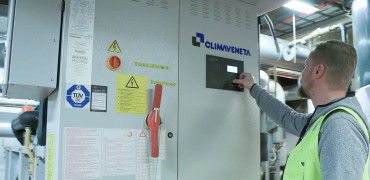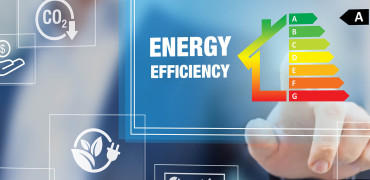Embracing the future: Smart technologies transforming facilities management
Kris Swiderski of Mitsubishi Electric’s Service & Maintenance team highlights the importance of staying ahead of the technology curve in the increasingly fast-paced world of building management for energy efficiency and sustainability.
In today’s facilities management sector, harnessing the power of technology is increasingly essential for success.
FM teams are juggling multiple targets: energy efficiency, sustainability, carbon management and operational excellence, to name a few.
The latest technologies can help to keep these balls in the air, while adding features that drive long-term improvement in building performance.
The path forward is clear: embrace innovation, leverage data, and prioritise sustainability
An IoT revolution
In the past decade, the real revolution in building monitoring and management has been integration. The Internet of Things (IoT), along with wireless and Bluetooth capability, is spreading to create ‘smart’ building services equipment and has created opportunities for innovative FM teams.
With its growing range of connected sensors and devices, the IoT provides a real-time glimpse into a building’s operation.
As a result, a facilities manager has the power to spot energy use patterns (and deviations from them caused by possible equipment degradation) while also understanding occupancy patterns, which are increasingly important to help tenants looking to optimise space.
Proactive decision making
The information now available enables proactive decision making, optimises resource allocation, and, most importantly, enhances operational efficiency. Smart building technologies are emerging as vital tools for success.
Integration and connectivity are also powering greater use of remote monitoring, which is proving a game-changer for many FM teams. Advances in remote monitoring allow facilities managers to track equipment performance, pinpoint potential issues, and schedule maintenance tasks—all from a centralised platform.
But remote monitoring isn’t just about convenience and time-saving. It can be part of a strategy to enhance operational efficiency by minimising down-time and extending asset lifetimes.
Collecting data
With remote monitoring comes data collection. This provides new insights for building managers, allowing them to get to grips with optimising energy performance. Data helps faster decision-making and allows FM teams to be more certain of outcomes.
It’s also much easier to budget for data-backed maintenance planning – with fewer unknowns to account for.
Data collection means that investments in energy-saving equipment can be tracked to show their financial returns in terms of costs saved. In addition, facilities teams can allocate their own time and resources more accurately and efficiently.
Prioritising sustainability
Smart, connected technologies and data analytics are not only enhancing building efficiencies but also creating optimised work environments that prioritise sustainability.
For example, remote monitoring of indoor air quality throughout the day allows ventilation systems to respond faster, keeping indoor environments safer and more productive.
By embracing these innovations, FMs can manage their multiple objectives - keeping buildings efficient, sustainable and comfortable for occupants. But it’s imperative to be proactive and stay aware of what technology is capable of. This is particularly true as artificial intelligence (AI) becomes more widely applied in building management for rapid data collation and analysis. Being ahead of that is critical for success.
How we can help
Mitsubishi Electric’s Service & Maintenance team has spent many years helping clients optimise HVAC equipment performance. We have harnessed the power of connectivity to do that. One example is our newly enhanced IoT platform, MELCloud Commercial.
This is a system of connectivity for our air conditioning and ventilation systems. It allows building owners to understand and monitor a building’s energy consumption in real-time and have the means to optimise it. The connection can be wired via a LAN or a wireless connection via a SIM card.
The benefits of MELCloud are not simply its robust data tracking and system monitoring. It can present live data to users wherever they are through an easy-to-use interface for laptops or tablets. It can also display an entire estate on a single-page display, with colour coding to show the status of each building.
A clear route forward
The future of facilities management is bright because it is supported by smart connected technologies, data analytics, and user-focused interfaces.
For FMs and organisations willing to adapt, the opportunities are boundless.
The path forward is clear: embrace innovation, leverage data, and prioritise sustainability to thrive in the ever-evolving landscape of IT-enabled facilities management.
Kris Swiderski is Head of Service and Maintenance




